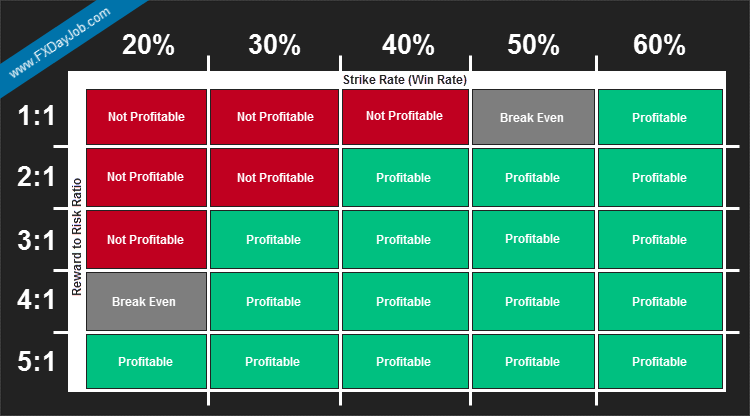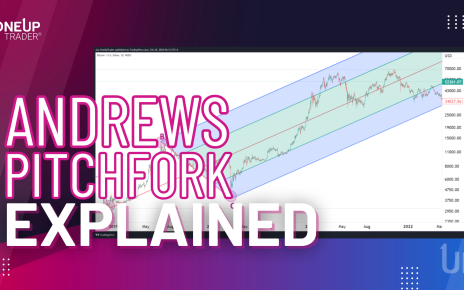Every trade puts you at risk of losing money. How you manage that risk will make a difference between making more profits and blowing up your account.
Even successful traders have losing trades because it’s impossible to win every single one. However, they know how to control the risk and ensure their gains on winning trades are more significant than their losses. That’s all thanks to proper risk management.
What is risk management in trading?

Risk management in trading is a set of principles for minimizing losses. It’s an essential part of a trading plan that helps curb the losses and open up more profit opportunities.
One of the biggest mistakes traders make is focusing on maximizing profits while overlooking the potential for loss. Unfortunately, that’s the best way for losses to get out of control.
Implementing risk management techniques into your trading strategy can mitigate your risk when the market moves in the opposite direction.
Fundamental risk management principles for minimizing losses
Whether you’re a trading newbie or an experienced trader, the following risk management principles should be essential to your trading plan and strategy.
The 1% rule
The 1% rule in trading is a crucial principle of position sizing. It refers to risking no more than 1% of your capital on a single trade.
For instance, if you have $30,000 in your account, applying the 1% rule would mean you won’t risk more than $300 on a single trade.
Some traders use the 2% rule to increase potential profits, but that amplifies potential losses, too. Sticking to the 1% rule will limit your risk on any given trade and help you preserve your equity.
Stop-loss and take-profit orders

Stop-loss orders are sell orders that trigger automatically when a traded security’s price reaches a lower, pre-specified price. They can help you mitigate losses on trades that don’t pan out the way you hoped.
For instance, if you buy a particular stock at $30 per share, you could put a stop-loss order at $25 to close the trade if the price drops below $25 per share.
Take-profit orders work the other way around. They trigger when a security’s price moves above the purchase price and reaches a pre-specified level.
In the scenario above, you could put a take-profit order at $35, thus capturing potential profit before a possible downturn.
Using stop-loss and take-profit orders is key to having complete control over your positions, particularly when engaging in day trading.
The risk/reward ratio
The risk/reward ratio is a measure for calculating expected returns for every dollar you risk on a particular trade. For instance, if your risk/reward ratio is 1:3, you could earn $3 for every dollar you risk.
It’s crucial to calculate the ratio after you’ve decided on your stop-loss and take-profit orders. If the ratio doesn’t match your requirements, you might want to wait for a more profitable trade.
Here’s how to calculate your risk/reward ratio:
RRR = (Entry Value – Stop-Loss Value) / (Profit Target – Entry Value)
If dividing the potential risk by the possible reward results in a value below 1.0, your potential profit is more significant than your potential loss.
Make sure you maintain a favorable risk/reward ratio and look for ways to improve it consistently.
The win/loss ratio

The win/loss ratio helps you compare your winning and losing trades. Dividing your total number of wins by the total number of losses will help you analyze your past performance and identify areas for improvement. A ratio above 1.0 shows your trading strategy is working.
Suppose you had 60 winning trades and 40 losing trades. Your win/loss ratio would be 1.5, which would mean you’re winning 50% more trades than you’re losing.
Combining your win rate with your risk/reward ratio will help you manage potential losses more effectively.
Here’s an infographic to help you better understand the relationship between the risk/reward ratio and the win rate:

Portfolio diversification
Every successful trader knows that putting all your eggs in one basket is not a smart idea. It could set you up for substantial losses.
That’s why it’s essential to diversify your portfolio. Investing in a variety of different assets will limit your exposure and yield higher returns.
It’s all about avoiding highly correlated investments, as they can increase your overall portfolio’s volatility.
For instance, the EUR/USD and GBP/USD pairs are highly correlated; they typically move in the same direction. That can be profitable with winning trades, but it can also increase your losses because the loss on the EUR/USD trade would also apply to the GBP/USD trade.
Investing in negatively correlated assets that don’t move in the same direction can help you minimize losses. The loss on one trade wouldn’t necessarily mean you’ll suffer a loss on another trade.
Hedging

To offset potential losses in a diversified portfolio, you can consider hedging your positions. Hedging means taking an opposite position in a related security.
It’s like taking out an insurance policy to avoid a potential loss, regardless of a particular security’s price movements. However, reducing the risk with this strategy would also reduce your potential gains.
The most effective hedges against underlying assets are derivatives like options, futures, forward contracts, and swaps. Their underlying assets can be stocks, bonds, commodities, indices, currencies, or interest rates.
Suppose you buy 50 shares of a particular stock at $30 per share before hedging the investment by purchasing a one-year put option (protective put) with a strike price of $25. Let’s say you pay $1 per option or $50 in premium.
If the stock trades at $35 one year later (or any other price higher than the purchase price), you won’t exercise the put option. That means you’d lose $50 in premium, but you’d be able to profit from selling the shares.
If the stock trades at a price lower than the strike price after the contract expires, you can exercise the put option and sell the shares for $25 per share. That would be a $250 loss. But without hedging your investment, you could have lost it entirely.
Mastering trading psychology
In trading, it’s crucial to prevent your emotions from getting the best of you. That’s a surefire way to blow up your account. If you can’t take a loss, you risk jeopardizing your strategy and putting your entire portfolio at risk.
So, self-reflect, stay calm and composed, and analyze your performance to see what you can improve. Keep emotions out of your trades, and you’ll be able to think clearly and identify more profit opportunities.
Bottom Line
The key to effective risk management is sticking to a winning strategy. When you apply all the principles above, analyze all the numbers, and ensure your trading strategy works, you’ll be on the right track to long-term success.
Learn how to optimize your risk management strategy with the Kelly Criterion in our dedicated article.





